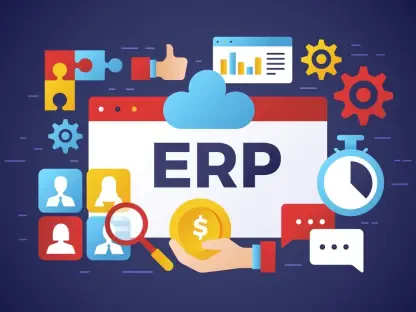In the fast-paced world of scientific discovery, laboratories across pharmaceuticals, biobanking, and beyond are grappling with an unprecedented challenge: managing an avalanche of data that grows exponentially each day, hindering efficiency and slowing innovation at a time when speed and precision are paramount. Amid this complexity, a transformative wave of technology—agentic AI and SaaS 2.0—emerges as a beacon of hope, promising to streamline operations and empower scientists with contextual insights. This report dives into how these advancements are reshaping laboratory informatics, addressing critical inefficiencies, and paving the way for a smarter, more connected future in research and development.
The Current Landscape of Laboratory Operations
Laboratory operations form the backbone of scientific progress, driving innovation in critical sectors such as drug development and biological research. These environments handle vast amounts of data daily, from experimental results to compliance records, making effective management a cornerstone of success. The ability to streamline workflows and ensure accuracy directly impacts the pace of breakthroughs, positioning labs as vital hubs in the global quest for advancement.
Central to this ecosystem are key segments like Laboratory Information Management Systems (LIMS) and Electronic Lab Notebooks (ELN), which digitize and organize complex processes. LIMS platforms manage sample tracking and data integration, while ELNs replace paper-based documentation with searchable, collaborative tools. Together, they enhance traceability and reduce human error, addressing long-standing pain points in lab efficiency.
Technological shifts, particularly cloud computing and AI integration, are redefining how labs operate, with major players like LabVantage Solutions leading the charge in delivering scalable solutions. Additionally, stringent regulations in highly regulated industries shape operational protocols, mandating compliance with standards for data security and traceability. These factors collectively underscore a dynamic landscape where technology and oversight intersect to propel labs toward greater precision and accountability.
Technological Advancements in Lab Operations
Emerging Trends and Innovations
A significant trend reshaping laboratory informatics is the evolution from SaaS 1.0 to SaaS 2.0, sometimes referred to as “software-as-a-service” in its advanced form. While the earlier model introduced cloud-based flexibility for LIMS and ELN systems, it struggled with data overload and lacked interpretive depth. SaaS 2.0 addresses these gaps by embedding intelligent services that prioritize actionable outcomes over mere access, marking a paradigm shift in functionality.
At the forefront of this transformation is agentic AI, featuring domain-trained agents that function as digital coworkers. Unlike basic automation tools, these agents understand scientific contexts, respond to natural language queries, and adapt to unique workflows. This capability allows them to tackle repetitive tasks, freeing researchers to focus on high-value analysis and fostering a collaborative dynamic between human and machine.
Labs today also demand more than centralized data—they require contextualized insights tailored to specific needs. This shift, coupled with a focus on human-centered design, reflects a broader push for intuitive technology that aligns with user preferences. Market drivers, including soaring data volumes and the potential for real-time automation, further fuel these innovations, positioning SaaS 2.0 and AI as indispensable tools for modern research environments.
Market Growth and Future Projections
Current data highlights a robust uptake of cloud-based LIMS and AI-driven solutions, with adoption rates climbing steadily across diverse lab settings. Industry analyses indicate that SaaS 2.0 implementations have already reduced operational bottlenecks by significant margins, enabling seamless collaboration even in distributed teams. This momentum signals a maturing market ready for deeper technological integration.
Looking ahead, growth projections for SaaS 2.0 and agentic AI suggest a sharp increase in efficiency and return on investment over the next few years, with estimates pointing to double-digit gains by 2027. Performance metrics reveal tangible benefits, such as slashed overhead costs and research timelines shortened by weeks, if not months. These indicators underscore the economic value of adopting next-gen systems in competitive scientific fields.
A forward-looking lens reveals that these technologies will fundamentally redefine lab capabilities in the coming decade. By enabling smarter decision-making and predictive analytics, they promise to unlock new frontiers in experimentation. As labs scale up digital transformation efforts, the ripple effects are expected to enhance not just individual outcomes but the broader pace of global scientific discovery.
Challenges in Adopting Next-Gen Lab Technologies
Implementing SaaS 2.0 and agentic AI comes with notable hurdles, chief among them being data fragmentation across siloed systems. Many labs still operate with legacy infrastructure that resists integration, creating barriers to seamless data flow. This disconnect often undermines the potential of advanced tools, leaving critical information inaccessible or underutilized.
Technological challenges also loom large, particularly around ensuring AI reliability. The risk of errors or untraceable outputs—sometimes termed “hallucinations” in AI contexts—poses a threat to credibility, especially in regulated settings where precision is non-negotiable. Addressing this requires rigorous validation processes to ground AI responses in verifiable data, a task that demands both time and expertise.
Market-driven issues add another layer of complexity, as labs exhibit varying levels of readiness for adoption. Smaller facilities may lack the resources for full-scale transitions, necessitating customized solutions that balance cost with impact. Strategies like phased implementation and comprehensive training programs for staff can mitigate these obstacles, ensuring smoother integration while building confidence in new systems.
Regulatory and Compliance Considerations
The regulatory landscape profoundly influences lab operations, enforcing strict standards for data traceability and security across industries like pharmaceuticals. Guidelines from bodies such as the FDA mandate meticulous record-keeping and audit trails, placing pressure on labs to maintain compliance amid evolving expectations. These rules are not mere formalities but essential safeguards for integrity and public safety.
Key laws governing data handling in regulated sectors require labs to adopt systems that ensure transparency at every step. SaaS 2.0 and agentic AI offer a lifeline here, providing grounded, verifiable responses that align with legal frameworks. Their ability to document processes and adapt to shifting standards makes them valuable allies in navigating this intricate terrain.
Beyond immediate mandates, regulatory changes have a broader impact on technology adoption, often dictating the pace at which labs can innovate. As policies tighten or expand, systems must remain agile to accommodate new requirements without disrupting workflows. This dynamic interplay between regulation and technology continues to shape how labs balance compliance with cutting-edge progress.
The Future of Labs with Lab 4.0 Vision
Envisioning the future under the Lab 4.0 concept reveals a landscape of unparalleled efficiency and intelligence, where labs operate as interconnected, data-fluent ecosystems. This paradigm prioritizes not just automation but strategic insight, leveraging advanced AI models and semantic frameworks to interpret complex datasets. Such tools promise to elevate research from routine to revolutionary.
Emerging disruptors, including next-gen AI algorithms, are poised to further refine lab capabilities, while shifting user preferences demand intuitive, conversational data interactions. Scientists increasingly seek platforms that mimic natural dialogue, simplifying access to insights without steep learning curves. This trend toward user-friendly design is set to redefine engagement with lab technology.
Growth areas abound, fueled by innovation, supportive regulatory environments, and rising global demand for scientific advancement. Economic conditions also play a role, as investment in next-gen solutions hinges on funding availability and market confidence. Together, these factors paint a picture of a vibrant future where labs harness technology to tackle humanity’s most pressing challenges with agility and precision.
Final Reflections and Path Forward
Reflecting on the insights gathered, it becomes clear that SaaS 2.0 and agentic AI have already begun addressing deep-rooted inefficiencies in lab operations, empowering scientists with tools that transform raw data into meaningful action. Their capacity to automate mundane tasks and deliver contextual insights marks a significant leap forward, setting a new benchmark for what labs can achieve.
Moving ahead, labs should consider strategic partnerships with industry leaders like LabVantage Solutions to tailor digital transformation to their unique needs. Investing in incremental upgrades rather than sweeping changes emerges as a practical approach, ensuring sustainable progress. Additionally, fostering a culture of continuous learning among staff promises to maximize the benefits of these technologies.
As the journey unfolds, exploring untapped potential in predictive analytics and cross-disciplinary collaboration stands out as critical next steps. By focusing on these areas, the scientific community can build on the foundation laid by SaaS 2.0 and AI, driving toward a future where innovation knows no bounds. This path, though gradual, holds the promise of reshaping research for generations to come.









